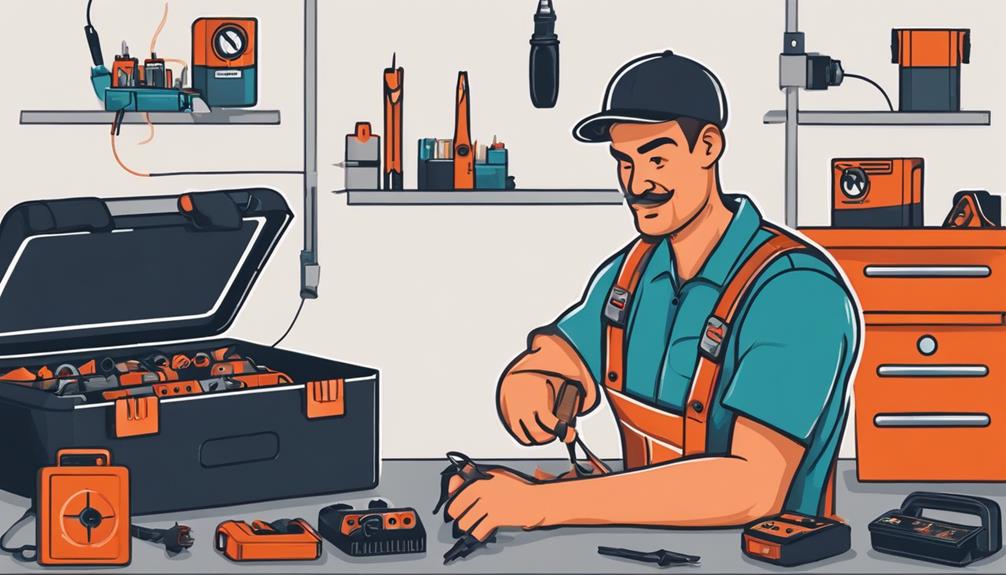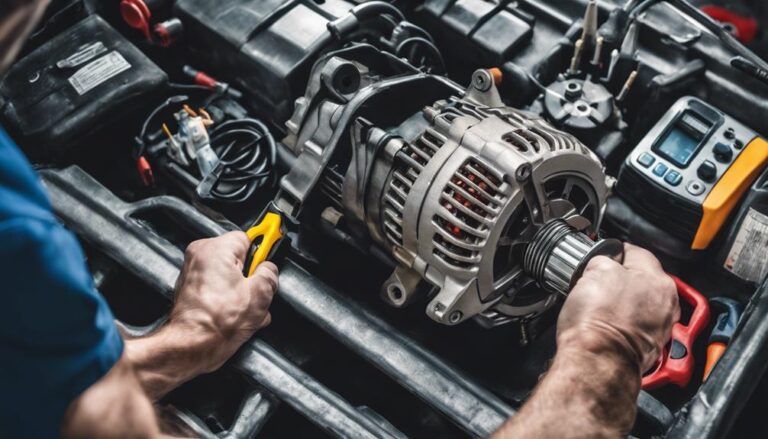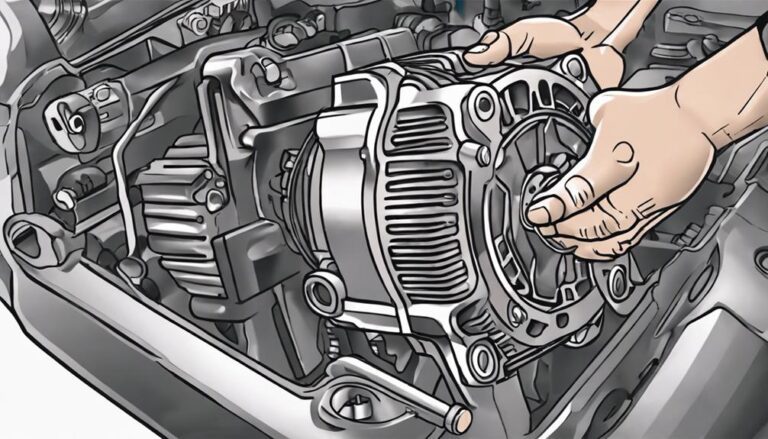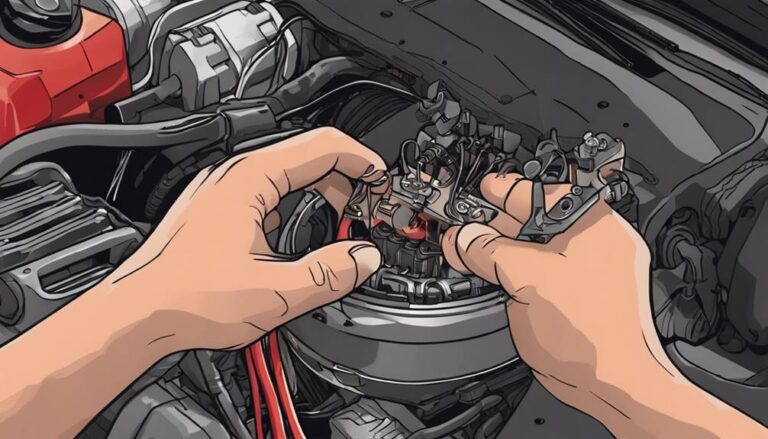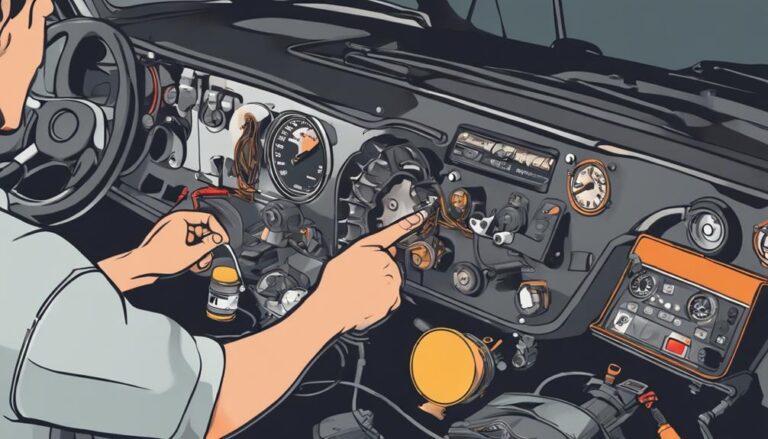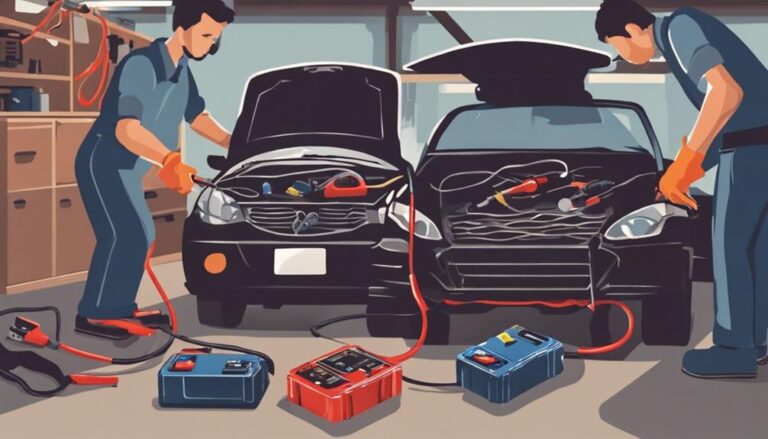Easy Solutions for Alternator and Starter Problems
If you've ever found yourself in a situation where your vehicle's alternator or starter is acting up, you know how frustrating it can be. The telltale signs may have you scratching your head, wondering what the root cause could be.
But fear not, there are practical steps you can take to troubleshoot and potentially resolve these issues on your own, saving you time and money. Let's explore some simple yet effective strategies to get your alternator and starter back in working order smoothly.
Key Takeaways
- Regularly check for warning signs like dimming lights to prevent alternator issues.
- Listen for clicking noises to identify potential starter problems and address them promptly.
- Use a digital volt ohmmeter to test alternator voltage within the proper range.
- Maintain connections, inspect components, and seek professional help for efficient alternator and starter solutions.
Common Alternator Issues and Fixes
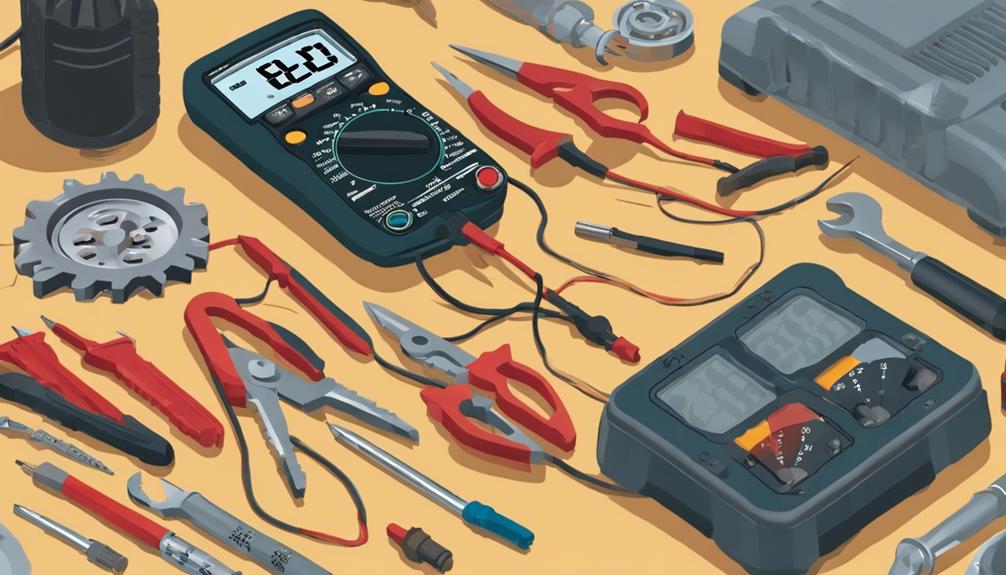
If your vehicle is experiencing charging problems, common alternator issues such as faulty diodes, worn-out bearings, or a damaged rotor may be the culprits. Symptoms of a bad charging system can manifest in various ways, including dimming lights, dashboard warning indicators, or difficulty starting the engine. Signs of a bad electrical system can lead to starting problems and overall vehicle performance issues.
When facing these symptoms, it's important to address the alternator promptly. Neglecting these warning signs can result in a dead battery and potential damage to other electrical components in your vehicle. To tackle these issues effectively, professionals often recommend checking the alternator's voltage regulator, brushes, and bearings for any wear or malfunction.
Regular maintenance plays a significant role in preventing alternator problems. Monitoring belt tension, inspecting electrical connections, and ensuring proper grounding can help prolong the alternator's lifespan and maintain a healthy charging system. Remember, seeking assistance from a certified mechanic for complex alternator issues ensures a thorough diagnosis and proper repair, keeping your vehicle in the best condition.
Troubleshooting Starter Problems
When troubleshooting starter problems, listen for clicking noises indicating a potential issue with the starter. If you notice the engine not turning over or cranking when you try to start your vehicle, this could be a sign of a faulty starter.
A bad battery can also mimic starter issues, so make sure your car battery is in good condition before diagnosing the starter. In cases where the starter seems to be the problem, you can try jump-starting your vehicle with jumper cables to rule out electrical power concerns.
Remember, a properly functioning starter is essential for initiating the engine's start-up process. If you suspect starter malfunctions, it's advisable to consult a mechanic for a definitive diagnosis and repair. Promptly addressing starter issues can prevent further damage and ensure your vehicle starts reliably.
Make sure to troubleshoot carefully and seek professional help if needed to maintain your car's performance.
Quick Alternator Voltage Testing

To accurately measure alternator voltage output, utilize a digital volt ohmmeter (DVOM). When the vehicle is started, the alternator voltage should typically range between 13.5-14.5 volts. Here are some key points to take into account when conducting quick alternator voltage testing:
- Proper Equipment: Make sure you have a DVOM that can measure DC voltage accurately.
- Safe Testing Environment: Always perform voltage tests in a well-ventilated area with the engine off.
- Connection Points: Attach the DVOM leads to the battery terminals, red to positive and black to negative.
- Interpretation of Readings: Monitor alternator voltage readings; low voltage readings could indicate potential alternator or battery issues that require further inspection.
DIY Alternator Repairs
For DIY alternator repairs, start by conducting a thorough inspection of the alternator components for any signs of wear or damage. If your car won't start or you notice dimming interior lights after the engine is running, it could indicate an alternator issue.
Use a multimeter to test the alternator's output voltage, ensuring it's charging the battery correctly. If the battery is fully charged but the car still won't start, the alternator might be the problem. Check and replace worn-out brushes or faulty diodes to enhance performance.
Clean and tighten all connections to guarantee proper electrical contact. If you have experience with electrical components, consider rebuilding the alternator using a kit. Follow a detailed guide or tutorial to safely and effectively repair the alternator on your own.
Starter Problems: Diagnosis and Solutions
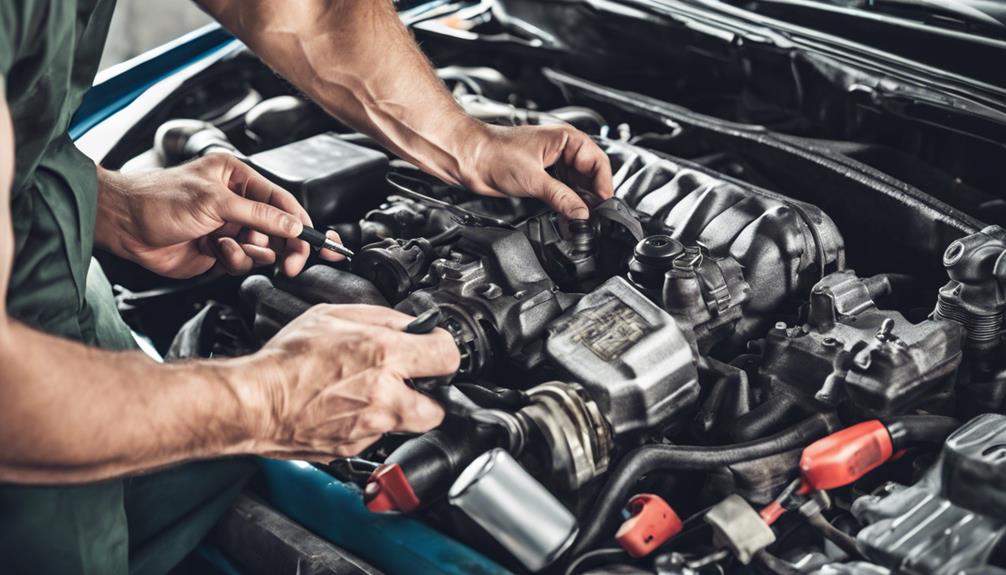
Experiencing difficulty starting your vehicle can often be attributed to potential starter problems. When you turn the key and hear clicking noises but nothing happens, it could indicate a failing starter. Here's how to diagnose and address starter issues:
- Check for Clicking Noises: If you hear clicking sounds when trying to start the vehicle, it could signal a bad starter.
- Engine Not Turning Over: Despite a charged battery, if the engine doesn't start, the starter might be the culprit.
- The Starter and Battery Work Together: The starter draws power from the battery to kickstart the engine, emphasizing the need for both components to function properly.
- Consult a Mechanic: If you suspect starter problems and nothing happens when you try to start the vehicle, seek professional help for a proper diagnosis and potential replacement.
Frequently Asked Questions
How Can I Start My Car With a Bad Alternator?
When you face a bad alternator and need to start your car, jump-start it for emergency power. Running the engine after can sustain it temporarily. Drive to a mechanic or shop promptly to prevent battery damage and potential stalling.
Is There a Temporary Fix for a Bad Alternator?
When your alternator fails, temporarily fix it with an emergency jumpstart, maintain battery health, explore temporary charging solutions, attempt DIY alternator repairs, or consider mobile mechanic services. Keep these options in mind for a smoother ride.
How Can I Make My Home With a Bad Alternator?
To power your home with a bad alternator, focus on emergency power solutions. Use portable chargers and backup batteries for essential devices. Consider DIY repairs with a power inverter for small appliances during power outages.
How Do You Fix a Faulty Alternator?
When fixing a faulty alternator, first diagnose the issue accurately. Consider DIY alternator repair or replacement using a guide for proper installation. Regular maintenance and monitoring can prevent common alternator problems, ensuring peak performance.
Conclusion
Now that you have learned about simple solutions for alternator and starter problems, remember to always investigate the truth of a theory before jumping to conclusions.
By following the troubleshooting steps and seeking expert help when necessary, you can guarantee the smooth operation of your vehicle's electrical system.
Stay proactive in maintaining your battery and components to prevent future issues and enjoy reliable performance on the road.

